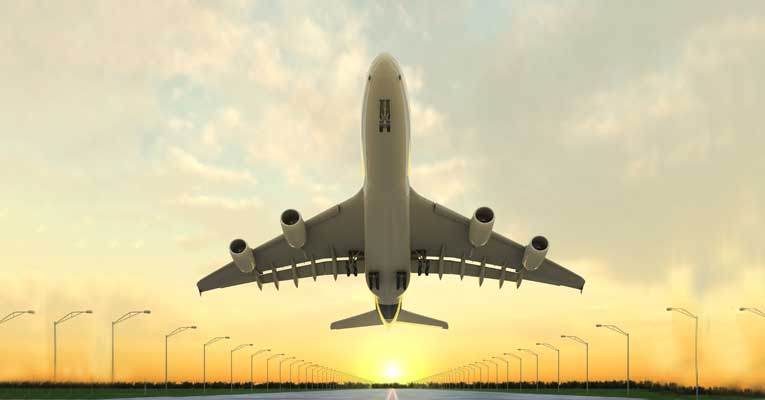Air freight demand registers 9% growth in 2017, strongest since 2010
January 31, 2018: The International Air Transport Association (IATA) has released a full-year 2017 data for global air freight markets showing that de

January 31, 2018: The International Air Transport Association (IATA) has released a full-year 2017 data for global air freight markets showing that demand, measured in freight tonne kilometers (FTKs) grew by 9.0 percent. This was more than double the 3.6 percent annual growth recorded in 2016.
Freight capacity, measured in available freight tonne kilometers (AFTKs), rose by 3.0 percent in 2017. This was the slowest annual capacity growth seen since 2012. Demand growth outpaced capacity growth by a factor of three.
Air cargo’s strong performance in 2017 was sealed by a solid result in December. Year-on-year demand growth in December increased 5.7 percent. This was less than half the annual growth rate seen during the middle of 2017 but still well above the five-year average of 4.7 percent. Freight capacity grew by 3.3 percent year-on-year in December.
Full-year 2017 demand for air freight grew at twice the pace of the expansion in world trade (4.3 percent). This outperformance was a result of strong global demand for manufacturing exports as companies moved to restock inventories quickly.
"Air cargo is still a very tough and competitive business, but the developments in 2017 were the most positive that we have seen in a very long time," said Alexandre de Juniac, IATA’s director general and CEO.
"The outlook for air freight in 2018 is optimistic. Consumer confidence is buoyant. And we see growing strength in international e-commerce and the transport of time - and temperature-sensitive goods such as pharmaceuticals. Overall the pace of growth is expected to slow from the exceptional 9.0 percent of this year. But we still expect a very healthy 4.5 percent expansion of demand in 2018. Challenges remain, including the need for industry-wide evolution to more efficient processes. That will help improve customer satisfaction and capture market share as the expectations of shippers and consumers grow ever more demanding," said de Juniac.
Asia-Pacific carriers saw demand in freight volumes grow 5.6 percent in December 2017 compared to the same period in 2016 and capacity grow by 2.2 percent. This contributed to a growth in freight demand of 7.8 percent in 2017 compared to 2016. Capacity increased 1.3 percent. The strong performance of Asia-Pacific carriers in 2017 largely reflects the ongoing demand for exports from the region’s major exporters China and Japan which has been driven in part by a pick-up in economic activity in Europe and a continued solid performance from the US. This is expected to support demand into the new year.
2017 calendar year | World share¹ | FTK | AFTK | FLF | FLF |
Total Market | 100.0% | 9.0% | 3.0% | 2.5% | 45.5% |
Africa | 1.9% | 24.8% | 9.9% | 3.0% | 25.7% |
Asia Pacific | 37.0% | 7.8% | 1.3% | 3.4% | 56.1% |
Europe | 24.2% | 11.8% | 5.9% | 2.4% | 46.4% |
Latin America | 2.7% | 5.7% | 3.1% | 0.8% | 34.2% |
Middle East | 13.7% | 8.1% | 2.6% | 2.3% | 44.9% |
North America | 20.5% | 7.9% | 1.6% | 2.1% | 36.5% |
¹% of industry FTKs in 2017 ²Year-on-year change in load factor ³Load factor level
Earlier, IATA also shared its latest business confidence survey of airline CFOs and heads of cargo. The results indicate a robust finish to 2017 for industry financial performance. 75 percent of the respondents reported that profitability increased in annual terms in Q4. This was below the 80 percent seen in the previous survey, but was still more than double the proportion of Q1 2017, when the squeeze on industry profit margins looks to have peaked. All told, the backward-looking weighted average score remained at an elevated level.
The proportion of respondents who expect profits to fall over the next 12 months rose to its highest level since Q2 2017, with many citing an expected impact of higher oil prices on profitability. Nonetheless, this was offset by a larger increase in the share expecting profitability to increase over the period. Notwithstanding some volatility during 2017, the forward-looking score has trended upwards since falling below the 50-mark in Q2 2016.
On the cargo side, the backward and forward-looking questions for freight demand yielded positive results. The 63 percent of respondents who reported a year-on-year rise in demand over the previous three months was the highest share for this measure since Q2 2011. Meanwhile, the proportion which reported a decline (7 percent) was the lowest in more than seven years. This combination lifted the backward-looking weighted-average score to its highest level since the post-crisis demand rebound in 2010/11.
Meanwhile, the forward-looking score also increased, to its highest level in three years. A number of respondents noted that the supply/demand balance is expected to remain favorable over the year ahead.



